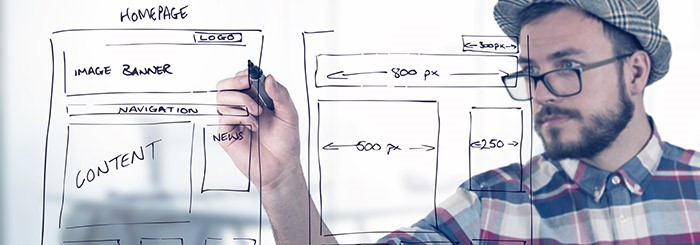
Website Design And Development
We prefer to use the word "portal" instead of "website" not just because it is more of a buzz word but because it does a clearer job of conveying our approach to a company's presence on the web. A portal should connect company to its target audience. Creating a portal that lacks focus of target audience opens the first hole in you customer funnel. Most of the time first impression with the brand is through webpage and first impressions are decisive. In this brief chance, approximately 1 second according to researches, users will decide whether they will leave right away or will stay for another 10 seconds. In this 1 second brand is judged by its cover which requires market-related modern design. Achieving this 1 second threshold, website has 10 seconds to create a brand equity, conduct an effective marketing campaign and gain a place in user’s mind. We believe in one trick to bypass all these challenges and achieve our partner’s goal: hard work.
PortalGrup approaches the concept of portal design and management from a business perspective and begins with thoroughly analysing a company's business practices, competitors, strategies and plans.
The portals we design and manage stand as testimonies to the approach of helping our partners to enhance their ROI and brand awareness while getting ahead of their competitors.
“While building web portals suited to our partner’s needs, we stay in line with brand’s persona and value proposition. To define the project strategy, we consider the following concepts to provide a general understanding of the process before giving more details.
- Process Mapping helps us map the inner procedures of a company which will have direct or indirect effects on the functionality and the looks of the portal.
- Segmentation is used to classify our target audience and personalise the portal accordingly.
- Business Requirement Plan lists out all the functions, modules and pages of the desired portal for the final approval of the partner.
- Wireframing presents our partners with the outlines of how the portal’s workflows will materialize vis-à-vis the design elements on their pages.
- Look and Feel phase enables us to get an insight on the kind of image our partners want their site to portray.
- Design takes input from all the above and builds a skeleton of the portal in three different layers:
- Graphic Design
- Database Design
- Class Design
- Coding starts after all the phases mentioned above are discussed and decided with the partner.
- Scenario Testing is the next step after all the coding is completed. The whole platform is put through in-depth tests of how the users of this portal will utilize it; allowing us and our partner to pinpoint any potential gaps in our model of thinking and coding.
- Responsive Design Testing is where design is passed through channels where it is aimed to be used.
- Web Stress Testing is done by exposing the site to a high traffic volume and making sure there are no problems under stress.
- Deployment and Babysitting period culminates the project with real life deployment of code. Our software team stays on top of the situation to make sure that the portal is functioning as intended under real life workloads and usage scenarios.
Gizlilik Tercihi Merkezi
İnternet Sitesi’nin sağlanması ve bilgi toplumu hizmetlerinin sunulması için zorunlu çerezler kullanmaktayız. Ayrıca, İnternet Sitesi’ni daha işlevsel kullanabilmeniz ve deneyiminizin iyileştirilmesi kapsamında performans ve analitik çerezleri, size yönelik kişiselleştirilmiş ürün ve hizmet tanıtımı kapsamında ise reklam ve pazarlama çerezleri kullanılmak istenmektedir. Zorunlu olmayan çerezler onay vermediğiniz durumlarda kullanılmayacaktır.
İnternet Sitesi’nde kullanılan çerezlerin türü ve kullanım amaçları ile bu çerezler bakımından sahip olduğunuz tercih haklarınıza ilişkin detaylı bilgiler için Çerez Aydınlatma Metni ’ni inceleyebilirsiniz.